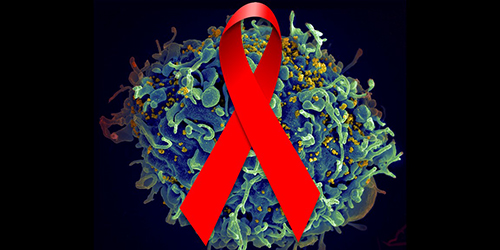



Business Inquiry
Global:
Email:marketing@medicilon.com
+1(781)535-1428(U.S.)
0044 7790 816 954 (Europe)
China:
Email: marketing@medicilon.com.cn
Tel: +86 (21) 5859-1500



The addition of adjuvants to vaccines to stimulate the immune system toward the antigen being injected is a common practice of vaccine delivery. However, trying to awaken the reservoir of dormant viruses in combination with vaccine administration represents a novel approach for human immunodeficiency virus (HIV) research. Yet, that is precisely the path a team of researchers from Beth Israel Deaconess Medical Center (BIDMC), Walter Reed Army Institute of Research (WRAIR), Janssen Vaccines & Prevention B.V., and Gilead Sciences has taken. The collaborative group was able to demonstrate that combining an experimental vaccine with an innate immune stimulant may help lead to viral remission in people living with HIV.

Using simian immunodeficiency virus (SIV)-Infected rhesus monkeys, the investigators found that the combination of vaccine and an immune stimulant decreased levels of viral DNA in peripheral blood and lymph nodes and improved viral suppression and delayed viral rebound following discontinuation of antiretroviral therapy (ART).
“The objective of our study was to identify a functional cure for HIV—not to eradicate the virus, but to control it without the need for ART,” explained senior study investigator Dan Barouch, M.D., Ph.D., director of the Center for Virology and Vaccine Research at BIDMC and professor of medicine at Harvard Medical School. “Current antiretroviral drugs, although they’re lifesaving, do not cure HIV. They merely hold it in check. We are trying to develop strategies to achieve ART-free, long-term viral suppression.”
The archetypal strategy behind vaccine use is to “teach” the body to rid itself of foreign invaders by provoking an immune response. However, HIV attacks cells of the immune system—killing the majority of infected immune cells and becoming dormant in the reaming few. The reservoir of dormant, infected cells, where researchers believe HIV remains hidden during antiretroviral therapy, is the primary reason HIV cannot currently be cured. The research team developed strategies to draw the virus out of hiding with the goal of eradicating it from the body.
“We reasoned that if we can activate the immune cells that might harbor the virus, then the vaccine-induced immune responses might perform better seeking them out and destroying them,” Dr. Barouch noted. “Indeed, we saw the best results when we combined the vaccine together with the innate immune stimulant.”
In the 2-year long study, researchers monitored the viral loads of 36 rhesus monkeys infected with SIV, a virus similar to HIV that infects nonhuman primates. After taking suppressive ART drugs for 6 months, the monkeys were given either the experimental vaccines—an adenovirus serotype 26 vector vaccine and an MVA vector vaccine (Ad26/MVA)—alone, the immune stimulant (an experimental drug that works on a protein of the immune system called TLR-7) alone, or the Ad26/MVA and stimulant combination. A control group received no active treatment.
The findings from this study were published recently in Nature in an article entitled “Ad26/MVA Therapeutic Vaccination with TLR7 Stimulation in SIV-Infected Rhesus Monkeys.”
“We found the combination of Ad26/MVA vaccination and TLR7 stimulation proved more effective than either component alone,” co-senior study investigator Col. Nelson Michael, M.D., Ph.D., director of the U.S. Military HIV Research Program. “This was especially striking in viral load set-point, which impacts the future course of the disease.”
The researchers found that the experimental vaccine induced a robust immune response, both in magnitude (the number of immune cells generated) and breadth (the number of places on the virus the vaccine can targets).
To evaluate the efficacy of the vaccine and the immune stimulant, the researchers discontinued ART in all animals and continued to monitor their viral loads. Animals that received only the vaccine demonstrated some reduction of viral load, but the animals that were given the vaccine/immune stimulant combination showed a decline in plasma viral RNA levels as well as a 2.5-fold delay of viral rebound compared to controls. Moreover, all nine animals showed decreased viral loads, and the virus was undetectable in a third of the animals.
“If all the animals’ viral loads had been undetectable, that would have been a home run,” Dr. Barouch stated. “But the fact that all animals showed a reduction in viral load and three out of nine were undetectable—that’s a solid base hit. It’s definitely something that we can work from.”
 Relevant
news
Relevant
news